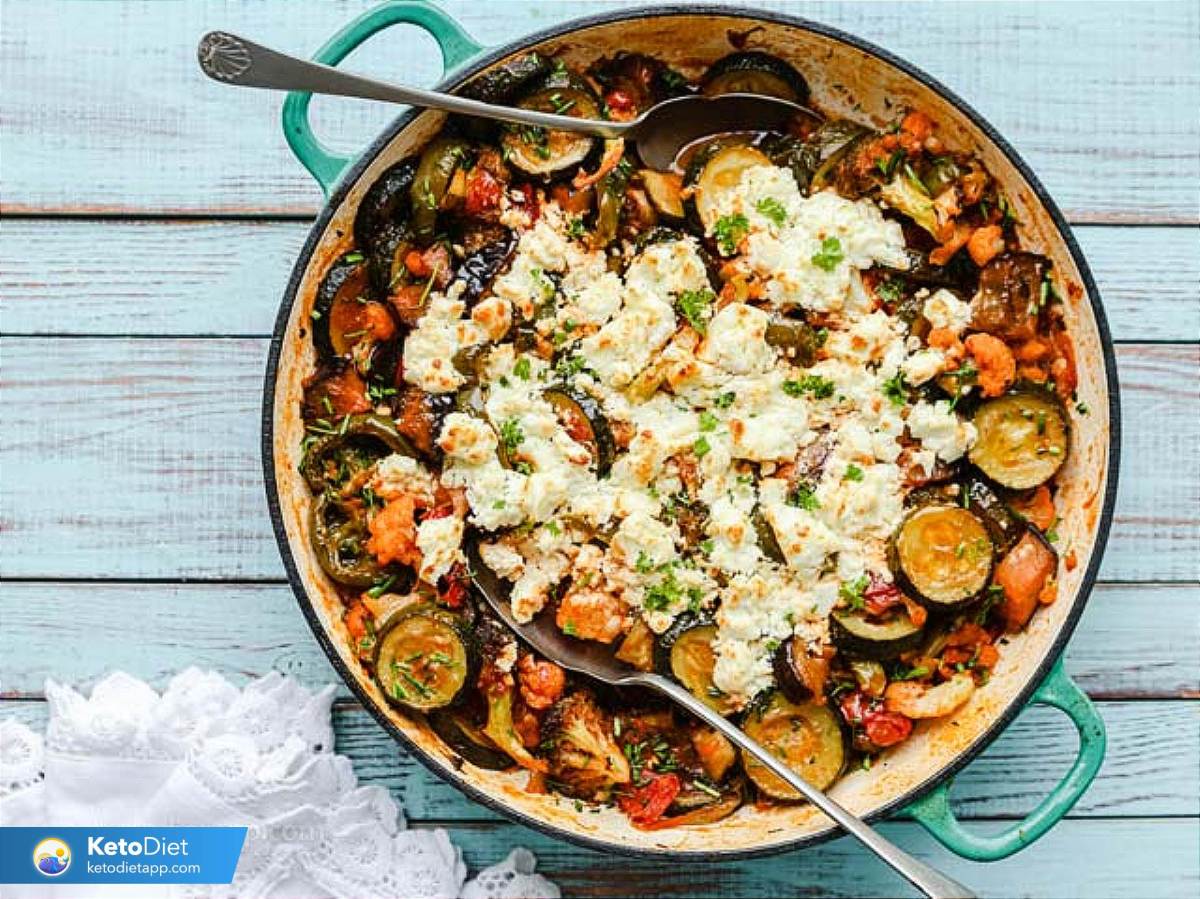Embark on a culinary journey where delicious vegetarian keto meals meet budget-conscious living. Imagine vibrant plates bursting with color and flavor, crafted from inexpensive, readily available ingredients. This guide unveils the secrets to creating satisfying, high-fat, low-carb dishes without breaking the bank. Learn strategic shopping techniques, master simple meal prep strategies, and discover a treasure trove of inventive recipes that will transform your keto experience, proving that healthy eating doesn’t have to be expensive.
We’ll explore clever ingredient substitutions, transforming budget-friendly staples into keto-friendly delights. Visual descriptions will guide you through the cooking process, showcasing the transformation of raw ingredients into mouthwatering meals. From hearty soups to satisfying salads, you’ll learn to create a diverse range of vegetarian keto dishes that are both delicious and economical, making healthy eating accessible to everyone.
Budget-Friendly Vegetarian Keto Ingredient Substitutions

Embracing a vegetarian ketogenic diet doesn’t have to break the bank. Many affordable alternatives exist for commonly used, but pricey, ingredients. Strategic shopping and smart substitutions can significantly reduce your grocery bill without compromising the nutritional integrity of your keto meals. This section explores cost-effective swaps and provides practical recipe examples.
Affordable Vegetarian Keto Ingredient Substitutions
The following table highlights common expensive keto-friendly vegetarian ingredients and their cheaper counterparts, comparing cost and nutritional value. Remember that prices can vary based on location and seasonality. This table offers a general comparison.
| Ingredient | Substitute | Cost Comparison | Nutritional Differences |
|---|---|---|---|
| Avocado | Cauliflower | Cauliflower is significantly cheaper than avocado, often costing a fraction of the price per pound. | Avocados are higher in healthy fats and fiber, while cauliflower provides more vitamin C and fiber per calorie. Both are low-carb. |
| Coconut Flour | Almond Flour (or a blend of almond and sunflower seed flour) | Almond flour can be more expensive than coconut flour, but blending it with a less expensive flour like sunflower seed flour reduces the overall cost. | Almond flour has a slightly nuttier taste and is higher in protein and healthy fats. Coconut flour is more absorbent and can produce a denser texture. |
| Macadamia Nuts | Pecans or Walnuts | Pecans and walnuts are generally less expensive than macadamia nuts. | Macadamia nuts are higher in monounsaturated fats, while pecans and walnuts offer a good source of omega-3 fatty acids and various vitamins and minerals. |
| Cream Cheese | Full-fat Greek Yogurt (plain, unsweetened) | Greek yogurt is usually a more budget-friendly option than cream cheese, especially when purchased in larger containers. | Cream cheese is higher in fat and has a richer, creamier texture. Greek yogurt provides a good source of protein. |
Cost-Saving Vegetarian Keto Recipes
These recipes demonstrate the practical application of affordable substitutions.
Recipe 1: Cauliflower “Rice” Stir-Fry
This recipe replaces expensive cauliflower rice with a homemade version using a whole head of cauliflower, saving money and reducing food waste. Imagine vibrant orange and green stir-fried cauliflower florets, glistening with a light sesame oil dressing, interspersed with crunchy slivers of bell peppers and onions. The visual is one of healthy abundance.
Recipe 2: Almond and Sunflower Seed Flour Pancakes
These pancakes use a blend of almond and sunflower seed flour, reducing the reliance on solely expensive almond flour. Picture fluffy, golden-brown pancakes, subtly nutty in flavor, stacked high on a plate, ready to be drizzled with sugar-free syrup.
Recipe 3: Greek Yogurt-Based Keto Dip
This recipe replaces expensive cream cheese with full-fat Greek yogurt in a creamy dip, perfect for vegetables or keto-friendly crackers. Visualize a creamy, white dip, subtly tangy in flavor, served in a rustic bowl alongside colorful, crisp vegetables.
Strategic Grocery Shopping for Budget-Friendly Keto
Planning is crucial for maximizing savings. Create a detailed shopping list based on your chosen recipes, focusing on the cheaper substitutes. Check unit prices to compare value. Buy in bulk when feasible for non-perishable items like nuts and seeds. Utilize seasonal produce, as it is usually cheaper and fresher. Avoid impulse purchases and stick to your list to minimize waste and control spending. Remember to consider freezing leftovers to prevent spoilage and extend the life of your ingredients.
Mastering Vegetarian Keto Cooking on a Tight Budget
Embarking on a vegetarian ketogenic diet doesn’t necessitate a hefty price tag. With careful planning and a few clever strategies, you can enjoy delicious and healthy keto meals without breaking the bank. This section will equip you with practical tips and techniques to optimize your vegetarian keto cooking while minimizing expenses. We’ll explore ways to stretch your ingredients further, reduce waste, and avoid unnecessary spending.
Budget-Conscious Vegetarian Keto Cooking Strategies
Saving money on a vegetarian keto diet involves a multifaceted approach. By focusing on affordable ingredients, utilizing leftovers creatively, and planning meticulously, you can significantly reduce your grocery bill while maintaining a delicious and satisfying meal plan. The following tips highlight key strategies for achieving this balance.
- Prioritize inexpensive, keto-friendly staples: Focus on purchasing budget-friendly staples like cauliflower rice (easily made at home from a head of cauliflower, significantly cheaper than pre-made bags), eggs (a fantastic source of protein and fat), leafy greens (spinach, kale, and collard greens are generally less expensive than others), and various types of nuts and seeds (buy in bulk for better value). These form the base of many keto-friendly vegetarian meals.
- Embrace seasonal produce: Seasonal vegetables and fruits are typically more affordable and flavorful. Check your local farmers’ markets or grocery store flyers for deals on in-season produce suitable for keto (e.g., avocados, broccoli, zucchini in summer; Brussels sprouts, cauliflower, and cabbage in winter). This approach not only saves money but also ensures higher quality ingredients.
- Cook larger batches: Preparing larger portions of dishes allows for efficient use of ingredients and minimizes cooking time in the long run. Leftovers can be repurposed into new meals, reducing food waste and saving you money on subsequent meals. For example, a large batch of cauliflower mash can be used as a base for several meals throughout the week.
- Reduce reliance on processed keto foods: Many processed keto products can be significantly more expensive than whole foods. Focus on preparing meals from scratch, using whole, unprocessed ingredients whenever possible. This allows for greater control over ingredients and significantly lowers the cost per serving.
- Master simple, versatile recipes: Learn a few versatile recipes that can be adapted using different, readily available ingredients. For example, a basic keto stir-fry can be made with a variety of low-carb vegetables, tofu (a relatively inexpensive source of protein), and a simple sauce. This flexibility allows you to use whatever is on sale or already in your pantry.
Maximizing Leftovers to Reduce Food Waste
Effective utilization of leftovers is crucial for minimizing food waste and maximizing your budget. Rather than letting perfectly good food go to waste, consider creative ways to transform leftovers into new and exciting meals.
Imagine a vibrant scene: leftover roasted vegetables from last night’s dinner are repurposed into a flavorful frittata for breakfast. Yesterday’s cauliflower rice becomes the base for a creamy mushroom and spinach keto “risotto” tonight. A large batch of keto chili can be enjoyed for lunch and dinner, and then transformed into a hearty keto soup the following day by simply adding more broth. Such strategic planning ensures minimal food waste and a significantly reduced grocery bill.
Meal Planning and Shopping List Optimization
Strategic meal planning and creating a detailed shopping list are paramount to avoiding impulse purchases and sticking to your budget. Before heading to the grocery store, take some time to plan your meals for the week, considering the ingredients you already have on hand. This structured approach prevents spontaneous purchases of unnecessary items, thereby significantly reducing food waste and overall expenses. A visual representation, such as a weekly meal planner with corresponding shopping list, can greatly improve this process.
Mastering the art of budget-friendly vegetarian keto cooking is not just about saving money; it’s about unlocking a world of culinary creativity and embracing a healthier lifestyle without compromise. By implementing the strategies and recipes Artikeld in this guide, you’ll confidently navigate the world of ketogenic eating while keeping your wallet happy. Picture yourself effortlessly preparing vibrant, flavorful meals that nourish your body and delight your taste buds, all while staying within your budget. The journey to a healthier, wealthier you begins here.
FAQs
Can I still get enough protein on a vegetarian keto diet?
Yes! Focus on protein-rich vegetarian sources like tofu, tempeh, cheese, eggs (if ovo-vegetarian), and nuts/seeds. Ensure you’re consuming enough to meet your daily protein needs.
How do I manage cravings on a budget-friendly keto diet?
Keep healthy, keto-friendly snacks on hand, such as nuts, seeds, avocado, or cheese. Drink plenty of water to help manage hunger pangs. Planning your meals ahead of time also helps prevent impulsive, unhealthy choices.
What if I don’t like the taste of some keto-friendly substitutes?
Experiment with different spices and herbs to enhance the flavor of your dishes. Don’t be afraid to try different recipes until you find ones you truly enjoy. Many recipes offer variations to accommodate personal preferences.
Are there any potential downsides to a long-term vegetarian keto diet?
While generally safe, a well-planned vegetarian keto diet should include a variety of nutrient-rich foods to prevent deficiencies. Consult a doctor or registered dietitian, especially if you have pre-existing health conditions, to ensure it’s suitable for your individual needs.


